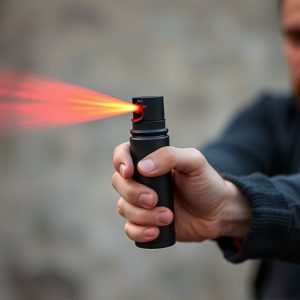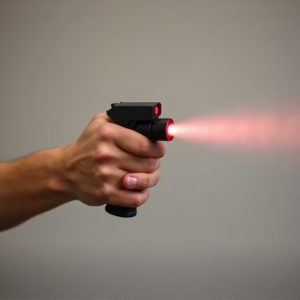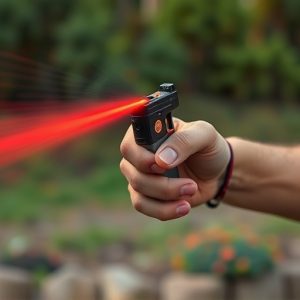Mastering civilian protection: What makes the strongest legal pepper spray?
Defensive spray (pepper spray) is a non-lethal self-defense tool with legal status varying by region…….
Defensive spray (pepper spray) is a non-lethal self-defense tool with legal status varying by region; understanding local laws is essential. The most effective sprays contain capsaicin (2%+), oleoresin capsicum (OC), and cinnamon oil, temporarily incapacitating aggressors without permanent harm. With a range of 2-3 meters, aiming for the face maximizes its effectiveness. Safety precautions include knowledge of range, proper storage, awareness of side effects, and regular training. When choosing a spray for civilian protection, consider ingredients, spray pattern, range, ease of use, low-light visibility, and durability, with capsaicin concentrations between 2% to 10% being ideal.
Defensive spray has emerged as a popular choice for civilian protection, offering a non-lethal way to deter potential threats. This comprehensive guide explores the world of defensive sprays, focusing on understanding their legal considerations and the science behind them. We’ll delve into the most effective ingredients, including the strongest legal pepper spray options, while providing insights into safety precautions and features to consider when choosing the right protection device for personal safety.
- Understanding Defensive Spray: Legal Considerations and Effective Ingredients
- The Science Behind Pepper Spray: How It Works and Its Safety Precautions
- Choosing the Right Spray: Features to Look For in Civilian Protection Devices
Understanding Defensive Spray: Legal Considerations and Effective Ingredients
Defensive spray, also known as pepper spray, is a non-lethal self-defense tool designed to temporarily incapacitate an aggressor. When used appropriately, it can provide civilians with a crucial window of safety and escape time in potentially dangerous situations. Understanding both the legal landscape surrounding defensive spray and its active ingredients is essential for responsible use.
In terms of legal considerations, the regulations around civilian possession and use vary widely across jurisdictions. Some regions have strict controls on who can carry pepper spray and where it can be used. It’s critical to research and comply with local laws to avoid legal consequences. As for effective ingredients, the strongest legal pepper spray ingredients typically contain capsaicin, the active compound found in chili peppers. Concentrations of 2% or higher capsaicin are considered potent enough for self-defense while remaining non-lethal. Other ingredients like oleoresin capsicum (OC) and cinnamon oil enhance the spray’s effectiveness, contributing to its irritant properties and ensuring a reliable response from the target.
The Science Behind Pepper Spray: How It Works and Its Safety Precautions
The science behind pepper spray revolves around its active ingredient, capsaicin, derived from chili peppers. When sprayed, capsaicin irritates the eyes and respiratory system by binding to specific nerve endings, causing a burning sensation and temporary incapacitation. This chemical disruption disrupts an attacker’s balance and vision, providing precious time for escape or assistance.
Safety precautions are paramount when using pepper spray. It’s crucial to understand its range and effectiveness—typically 2-3 meters—and to aim for the face and eyes, where it’s most potent. Proper storage in cool, dry places is essential, as extreme temperatures can affect potency. Users should also be aware of potential side effects like coughing, difficulty breathing, or skin irritation, especially in individuals with respiratory conditions or allergies. Regular training ensures safe and effective use.
Choosing the Right Spray: Features to Look For in Civilian Protection Devices
When selecting a defensive spray for civilian protection, understanding the features and ingredients is paramount. Look for products containing the strongest legal pepper spray ingredients, such as capsaicin, which is known for its effective irritant properties. The concentration of capsaicin can range from 2% to 10%, with higher concentrations offering more robust defense.
Additionally, consider factors like spray pattern, range, and ease of use. A wide spray pattern ensures maximum coverage, while a good range allows for distance when needed. Look for devices with an easy-to-use trigger mechanism, clear visibility in low-light conditions, and durable construction to withstand regular carrying and potential impact during an emergency.
Defensive spray is a valuable tool for civilian protection, offering a non-lethal means of self-defense. As we’ve explored, understanding legal considerations and ingredient effectiveness is key. The science behind pepper spray ensures its safety and legality when used responsibly. When choosing the right spray, look for products containing the strongest legal pepper spray ingredients to ensure maximum protection in emergency situations. Remember, proper training and awareness are equally important for safe and effective use.


